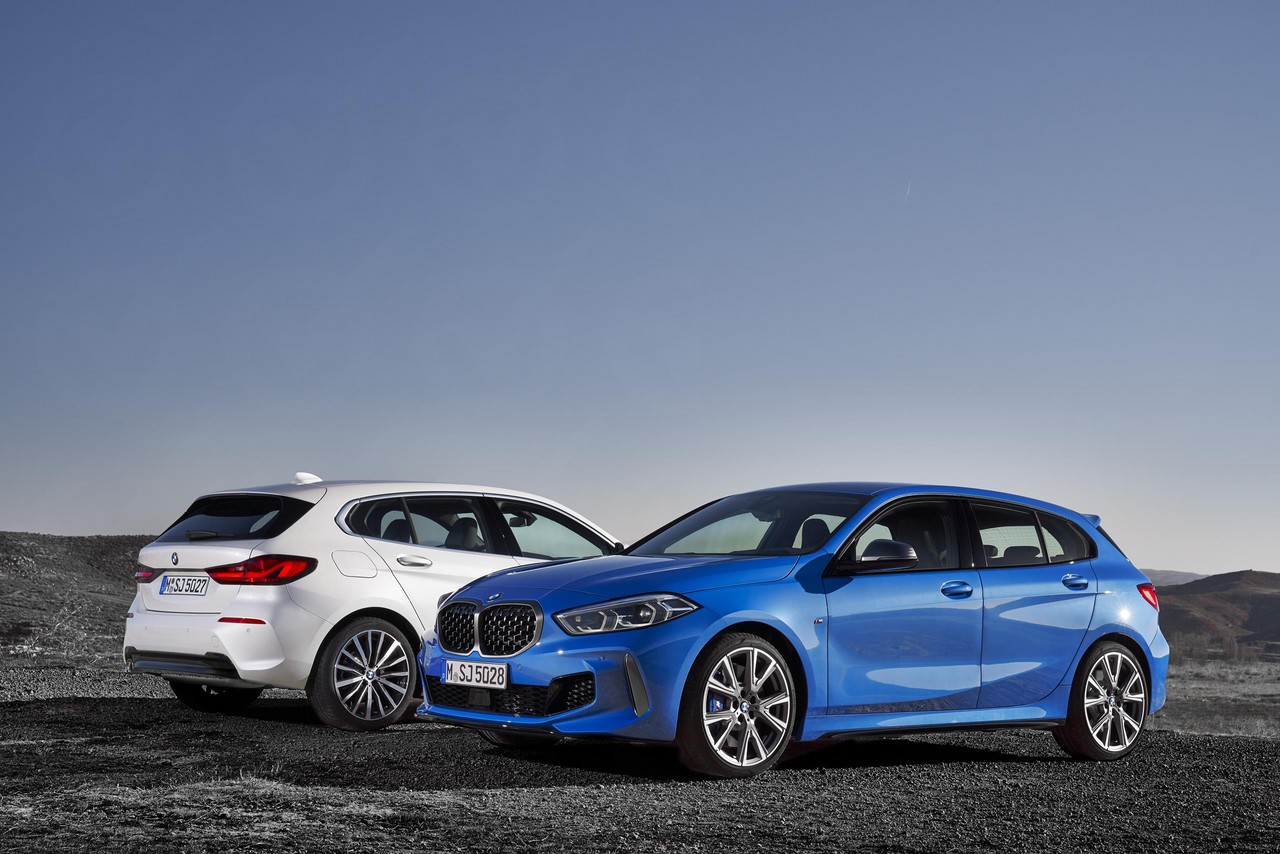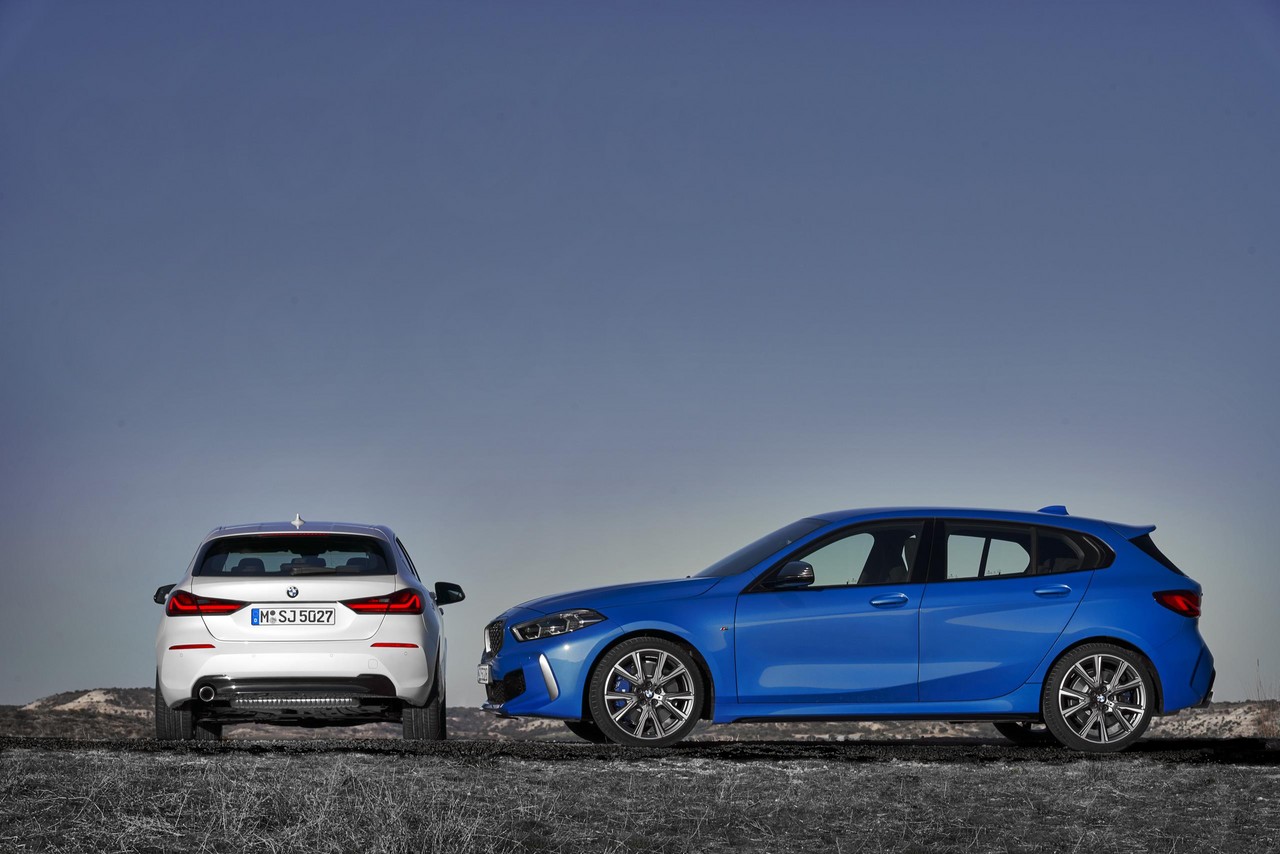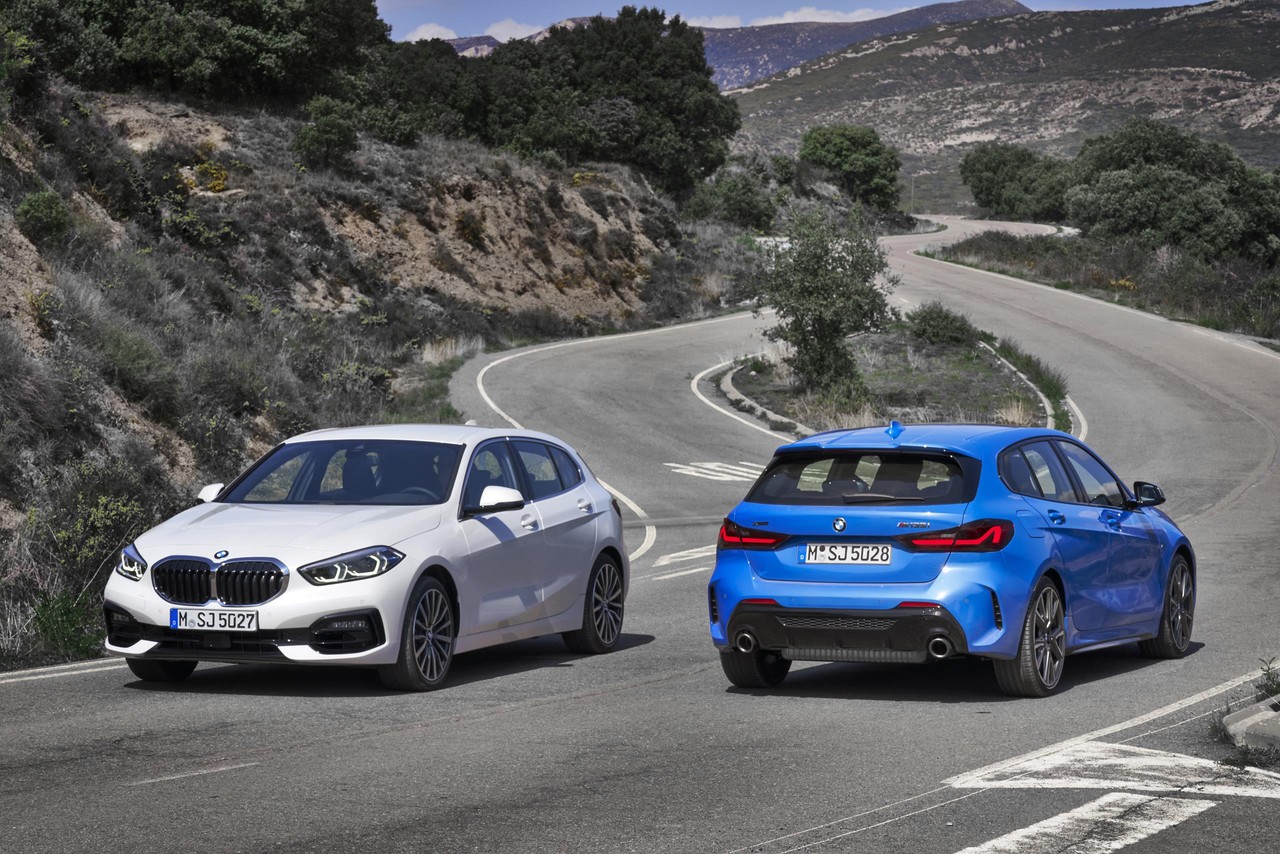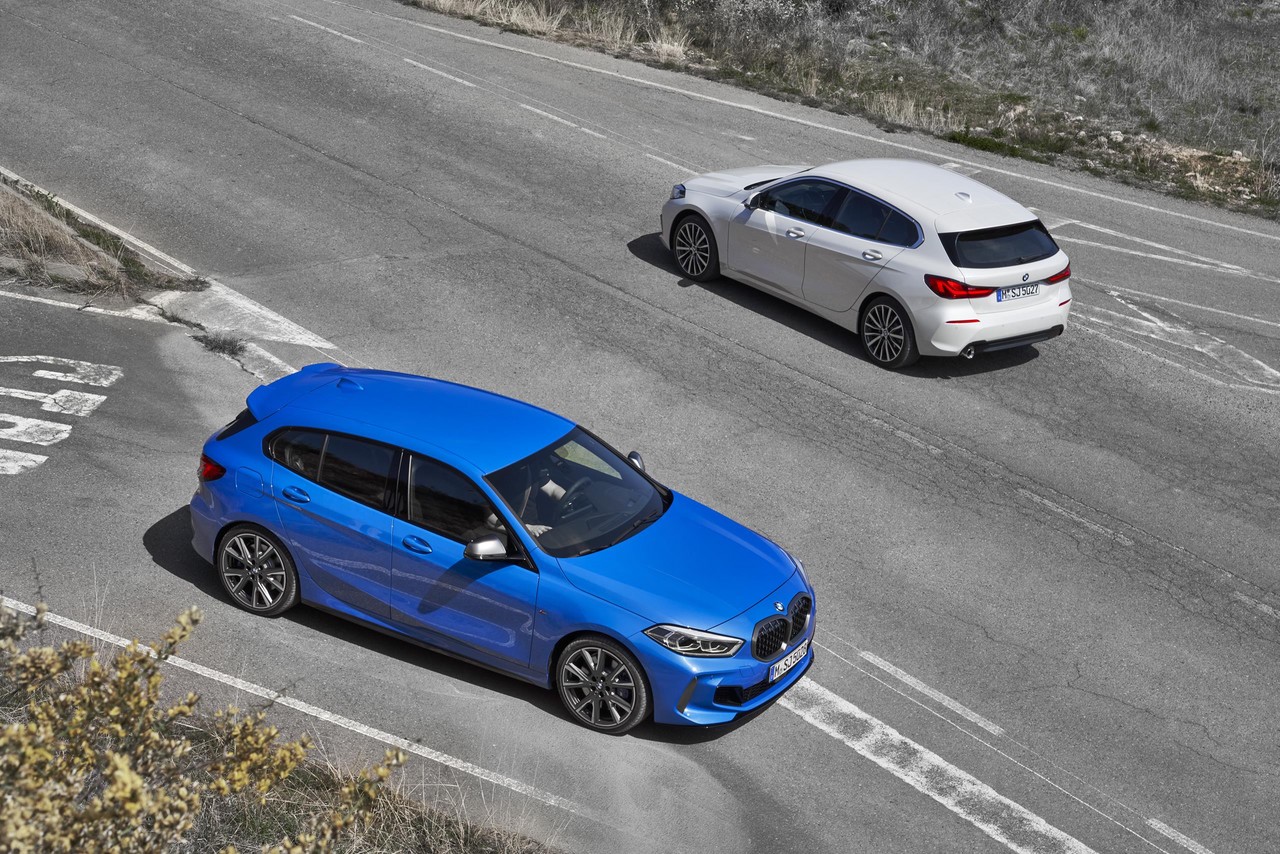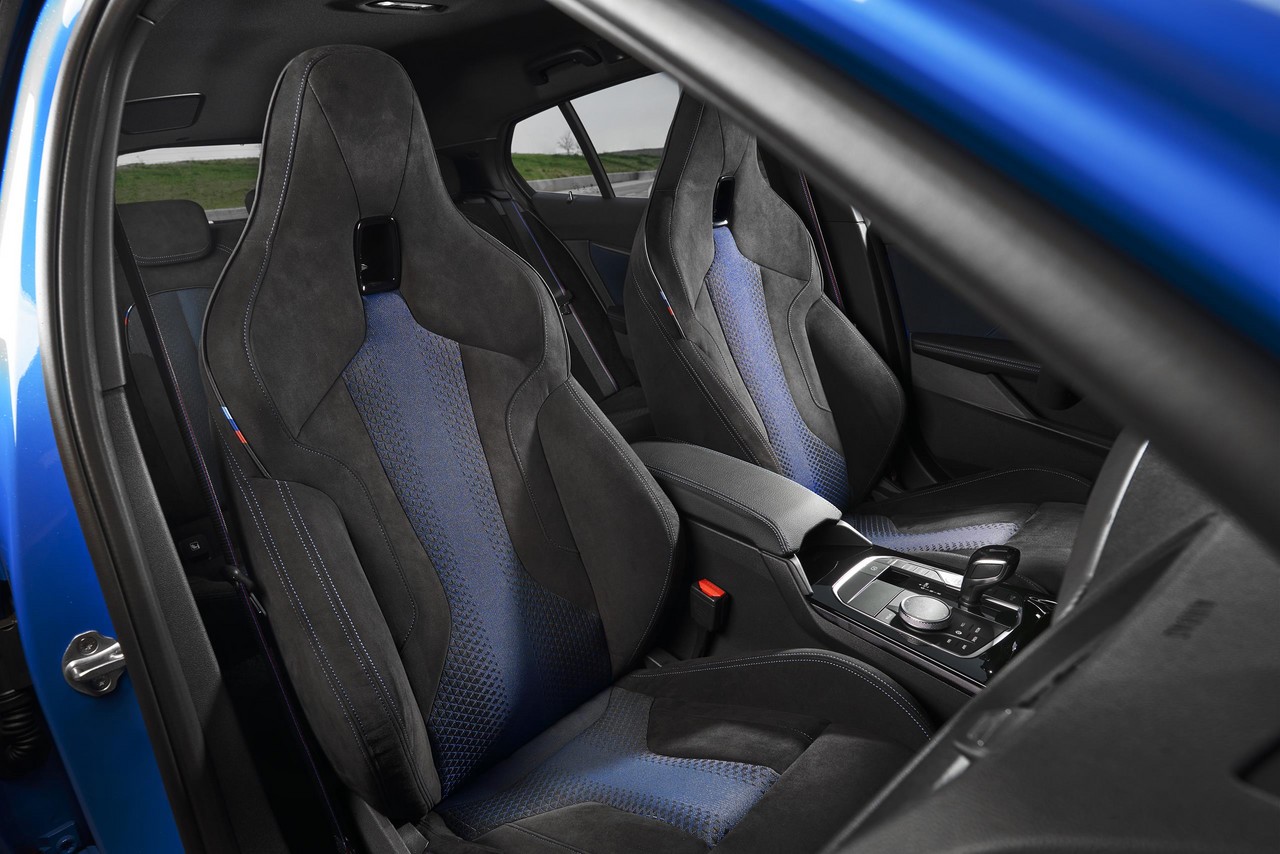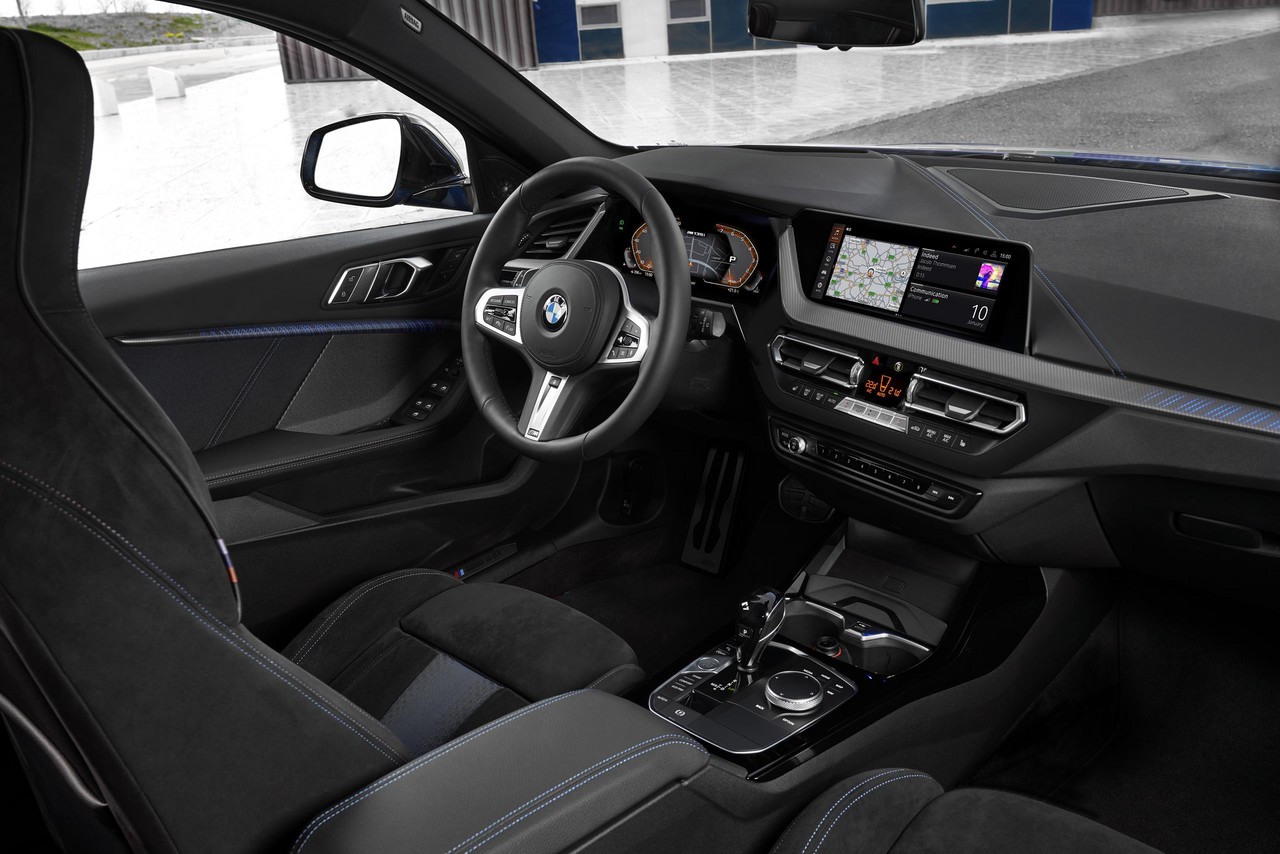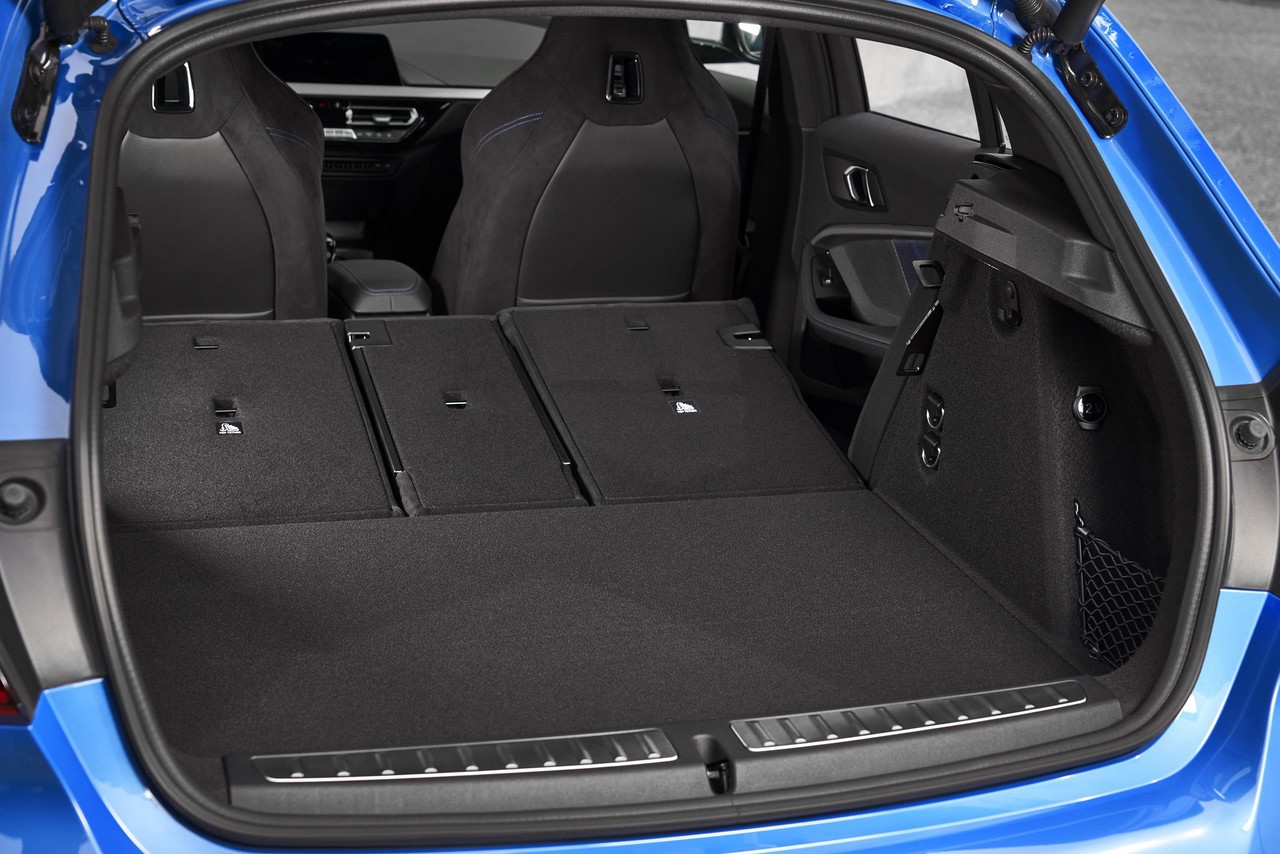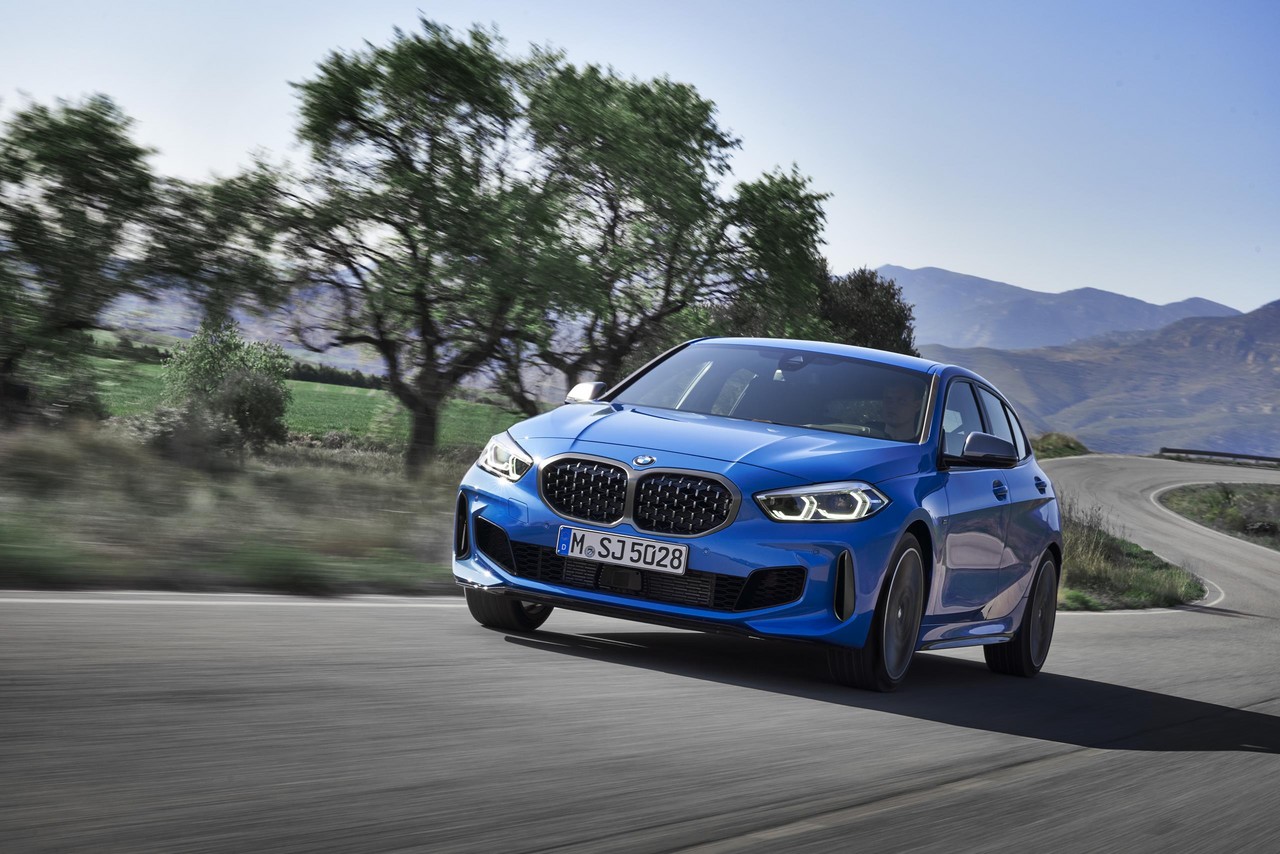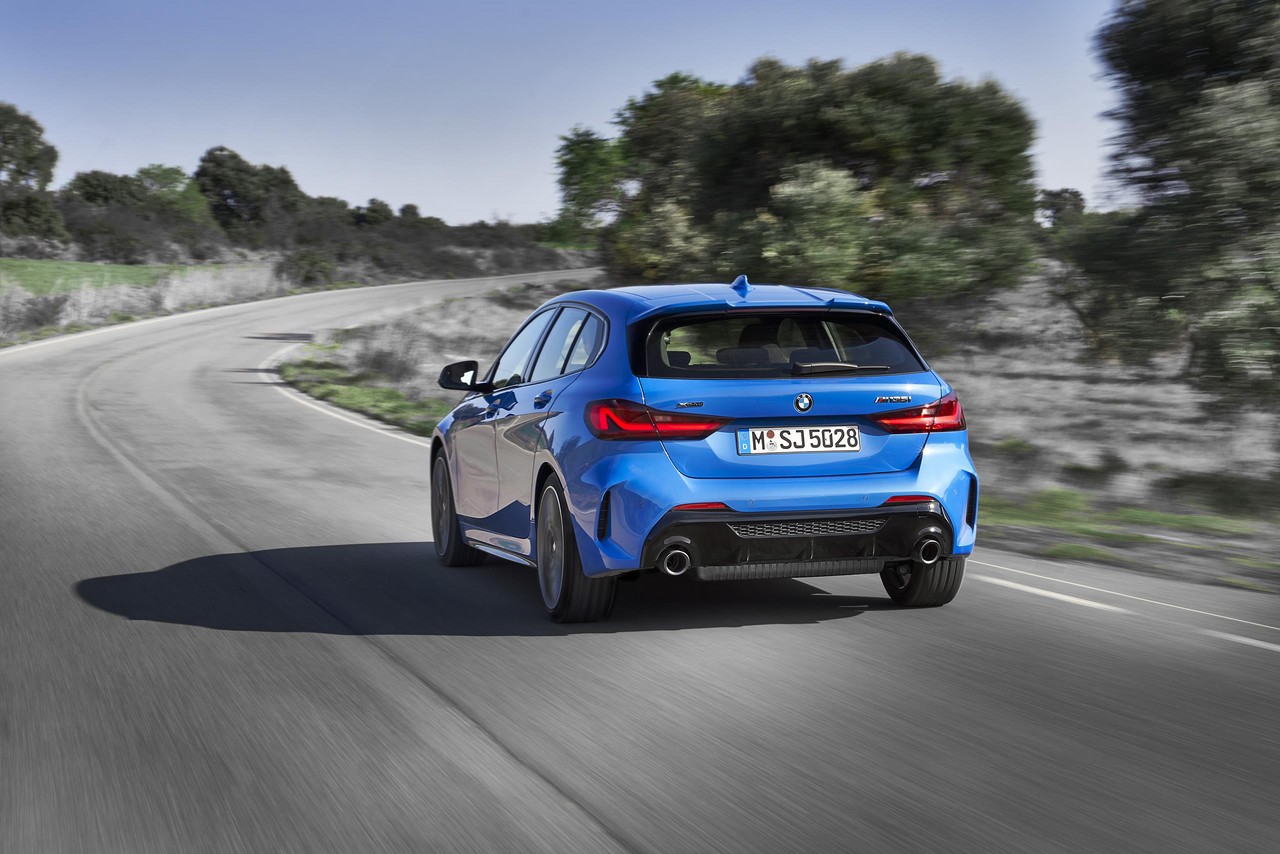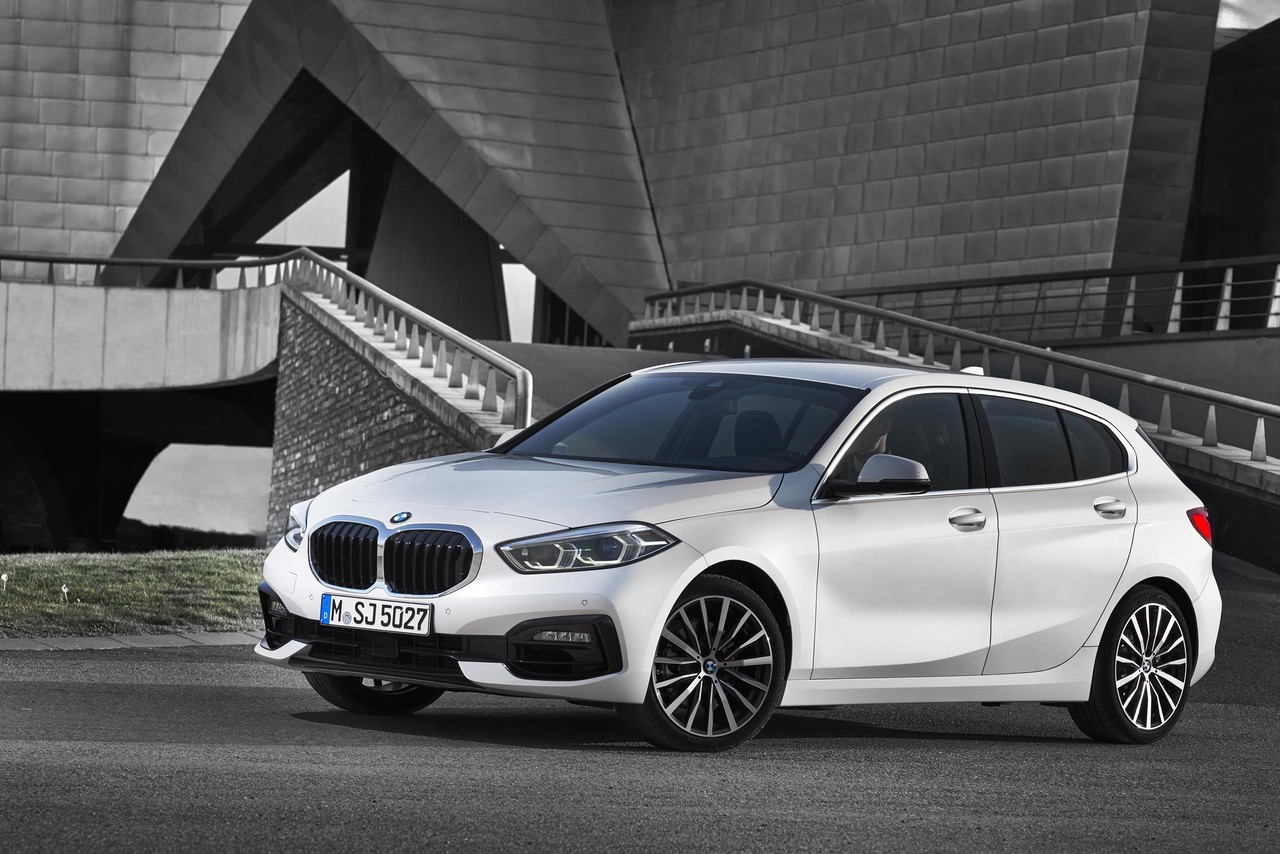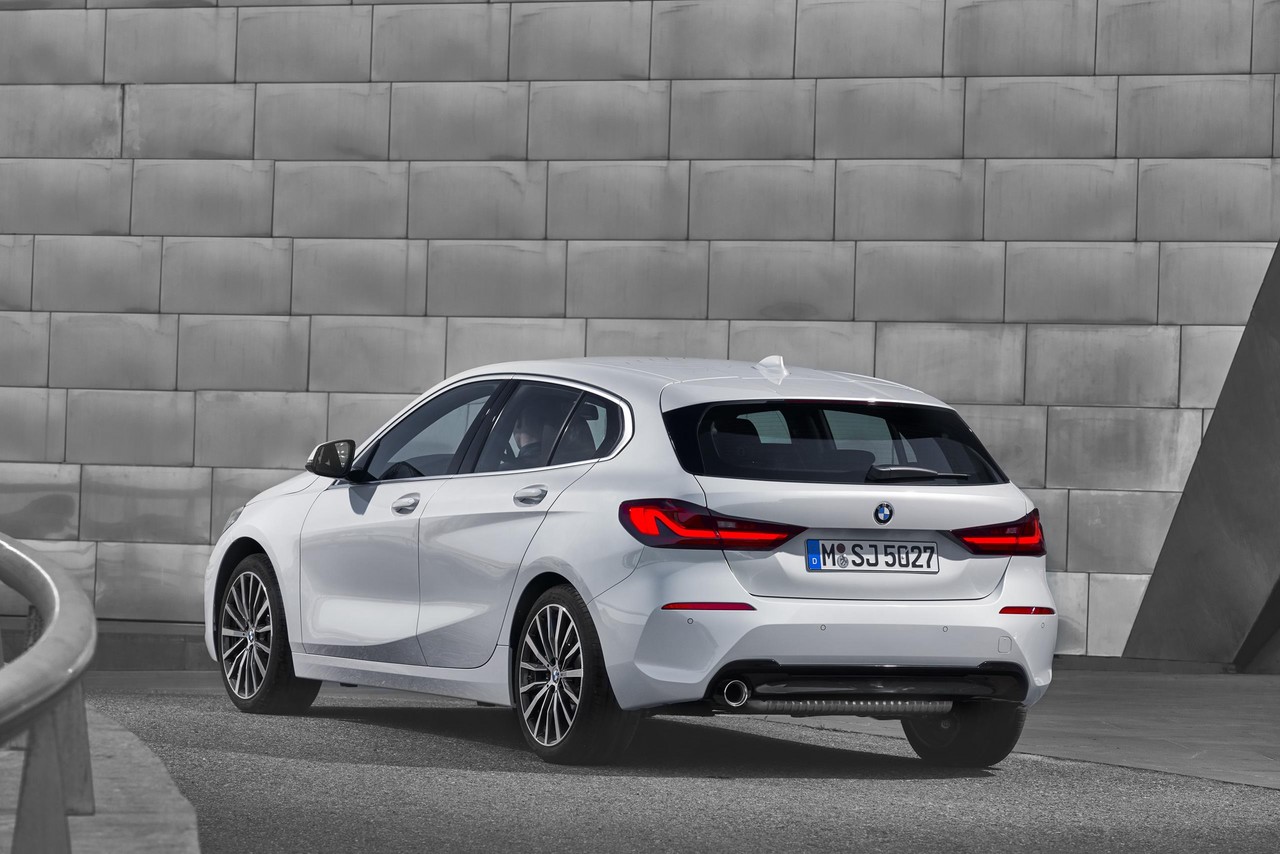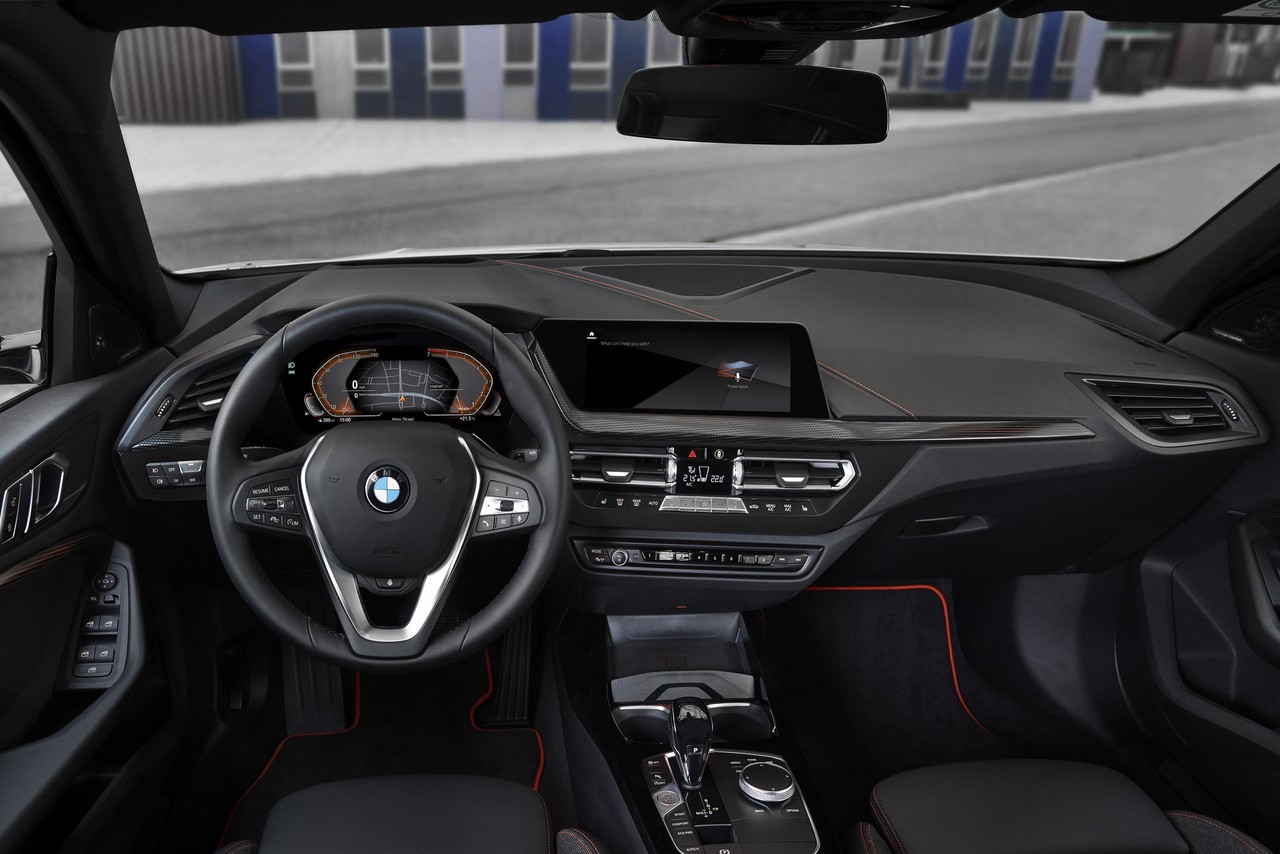
- Greater interior space
- Fuel-efficient engines
- Steering will be well-weighted…
- … but almost certainly lacking in feedback
- Loses a unique selling point with switch to front-wheel drive
- Lack of petrol engine options between 118i and M135i
- Cabin noise?
- Ride quality?
Overview
To be released in Australia in the fourth quarter of 2019, the BMW F40 1-Series Hatch is a five-door hatchback. Manufactured in Germany, the BMW F40 1-Series Hatch range for Australia will initially consist of front-wheel drive 118i and all-wheel drive M135i models.
B37, B38, B47 and B48 engines
The BMW F40 1-Series Hatch is powered by BMW’s B37 , B38 , B47 and B48 engines. As such, all drivetrains for the BMW F40 1-Series Hatch have the following technologies:
- Auto Start Stop: can shut down the engine when the vehicle is stationary in traffic to reduce fuel consumption;
- Brake Energy Regeneration: regulates alternator output to recharge the battery when the vehicle is coasting or braking; and,
- Eco Pro drive mode: adjusts engine management, throttle response and transmission behaviour to minimise fuel consumption. Eco Pro also includes a coasting function that can decouple the engine from the powertrain when the driver eases off the accelerator to prevent engine braking.
| Model | Engine | Trans. | Peak power | Peak torque |
|---|---|---|---|---|
| 118i | 1499 cc B38 turbo petrol I4 | 6sp man., 7sp DCT |
103 kW at 4200-6500 rpm | 220 Nm at 1480-4600 rpm |
| M135i xDrive | 1998 cc B48 turbo petrol I4 | 8sp auto | 225 kW at 4500-6250 rpm | 450 Nm at 1750-5000 rpm |
| 116d | 1496 cc B37 turbo diesel I4 | 6sp man., 7sp DCT |
85 kW at 2250-4000 rpm | 270 Nm at 1750-4000 rpm |
| 118d | 1995 cc B47 biturbo diesel I | 6sp man., 8sp auto |
110 kW at 2500-4000 rpm | 350 Nm at 1750-400 rpm |
| 120d xDrive | 1995 cc B47 biturbo diesel I | 8sp auto | 140 kW at 2500-4000 rpm | 400 Nm at 1750-4000 rpm |
xDrive all-wheel drive
The BMW F40 M135i and 120d are equipped with BMW’s ‘xDrive’ all-wheel drive system which consists of an electronically controlled, multi-plate clutch. In Comfort or Eco Pro modes, the system delivers torque to the front wheels but the multi-plate clutch can engage if a loss of traction occurs, or is anticipated, to provide a 50:50 front:rear torque split.
The BMW F40 M135i xDrive is also fitted with a mechanical Torsen limited-slip differential which can create a locking effect between the front wheels. The differential is integrated into the eight-speed automatic transmission and the M135i xDrive also features a Launch Control mode.
Wheel slip limitation and BMW Performance Control
As standard, the BMW F40 1-Series is equipped with BMW’s actuator contiguous wheel slip limitation (ARB) system. To control wheel slip, this system uses a slip controller in the engine control unit (ECU) rather than the control unit for the electronic stability control system – this eliminates long signal paths and relays information three times faster. According to BMW, the driver perceives wheel slip being brought under control approximately 10 times faster. ARB was first introduced on the BMW I01 i3s .
As standard, the BMW F40 1-Series has BMW Performance Control for yaw moment distribution. When cornering, BMW Performance Control applies the brakes for the wheels on the inside of the bend before the slip threshold has been reached – this suppresses any initial understeer to provide neutral steering behaviour.
Body and dimensions
Underpinned by BMW’s UKL2 front-wheel drive platform which is shared with the BMW F48 X1 , MINI F54 Clubman and MINI F60 Countryman . According to BMW, the use of aluminium – for the bonnet and tailgate – and high-strength steels provided a mass reduction of around 30 kg relative to the BMW F20 1-Series Hatch . While all F40 1-Series models have a strut which connects the front suspension towers, the F40 M135i xDrive has additional bracing at its front end and in the tunnel area, plus an anti-roll bar mounting with high pre-load.
Compared to the BMW F20 1-Series Hatch , the F40 1-Series Hatch is 5 mm shorter (at 4319 mm), 34 mm wider (1799 mm), 13 mm taller (1434 mm) and has a 20 mm shorter wheelbase (2670 mm). However, the front-wheel drive architecture provides significantly more interior space due to the lower centre tunnel and forward cab position. Luggage capacity, for example, increases by 20 litres to 380 litres; with the rear seats folded down and filled to the roofline, luggage capacity is 1200 litres.
Drag co-efficients for the BMW F40 1-Series Hatch range from 0.26 Cd (118i, 116d and 118d) to 0.34 Cd (M135i xDrive).
Suspension
The BMW F40 1-Series Hatch has MacPherson strut front suspension and a multi-link rear axle; the optional M Sport suspension has a 10 mm lower ride height. As an option, the F40 1-Series Hatch can be specified with Variable Damper Control (VDC) which has electronically-controlled dampers that adapt to driving conditions and enable the driver to select from Comfort or Sport drive modes. For the M Sport suspension and Variable Damper Control, the suspension includes an anti-roll bar mounting with high pre-load.
Steering
The BMW F40 1-Series Hatch has rack-and-pinion steering with electric power assistance. While the standard steering ratio is 15.0:1, the F40 M135i has ‘M Sport’ steering which features a more direct 14.0:1 ratio and varied power assistance. The turning circle for the F40 1-Series Hatch is 11.4 metres.
Safety equipment
Standard safety equipment for the BMW F40 1-Series Hatch includes dual front airbags, front side airbags, full-length curtain airbags, ABS, electronic brake force distribution, brake assist, cornering brake control, electronic stability control, traction control and front seatbelts with pre-tensioners and load limiters.
As standard, the BMW F40 1-Series is equipped with the following safety technologies –
- Approach Control Warning with City Braking: operating at speeds from 10 km/h to 60 km/h for pedestrian and cyclist detection and up to 80 km/h for vehicle detection, the approach control warning system initially warns the driver if there is a risk of a frontal collision. In its second stage, the braking system is prepared for faster response and, if the driver fails to react, autonomous emergency braking (AEB) is initiated to reduce vehicle speed;
- Lane Departure Warning: active at speeds from 55 km/h to 210 km/h, the driver is alerted by steering wheel vibrations if the vehicle deviates from its lane without prior activation of the indicators. Lane Departure Warning also includes an ‘active lane return’ function which uses steering inputs to guide the vehicle back to the centre of its lane;
- Lane Change Warning: active at speeds from 20 to 250 km/h, Lane Change Warning monitors the zones to the side of the vehicle. If the driver activates the indicators to change lanes, the system checks these zones and – if occupied – warns the driver via a flashing symbol in the respective door mirror;
- Crossing-traffic warning rear: when reversing out of a parking space, ‘Crossing-traffic warning rear’ warns the driver of approaching traffic that may intersect the driver’s path. If a collision is anticipated, the brakes are applied to reduce vehicle speed;
- Rear Collision warning: if a rear-end collision is anticipated, following traffic is warned by double frequency flashing of the hazard lights; and,
- Speed Limit Info: incorporates speed restrictions into the driver-selectable Speed Limiter function or Active Cruise Control.
Features: BMW F40 118i
For Australian-deliveries, the BMW F40 1-Series Hatch is equipped – as standard – with BMW’s ‘Live Cockpit Professional’ which has a 10.25-inch touchscreen and a 10.25-inch digital instrument display, navigation, a hard drive-based multimedia system, Bluetooth mobile phone connectivity, wireless smartphone charging and the ‘BMW Intelligent Personal Assistant’ which responds to the prompt ‘Hey BMW’ and enables the driver to operate functions by voice command.
Beyond this, standard features for the BMW F40 118i include climate control air conditioning, cruise control, LED headlights, LED front fog lights, a rear view camera, front and rear parking sensors, 60/40 split and flat folding rear seats, a leather-wrapped steering wheel, remote central locking, power mirrors and windows, a tilt and reach adjustable steering wheel, height adjustable front seats, 12 volt power outlets, trip computer, tyre pressure sensors and an immobiliser. The F40 118i is also fitted with BMW’s ‘M Sport Package’ as standard.
Other standard features include –
- Head-Up Display: projects driving-related information (such as speed, speed limits, overtaking restrictions, status indicators, warnings from the assistance systems and route guidance) onto an area of the windscreen measuring 9.2 inches in size in full-colour graphics;
- BMW’s ‘Parking Assistant’: provides automated steering for parallel or perpendicular parking manoeuvres, and exiting parallel parking spaces; and,
- BMW’s ‘Reversing Assistant’: stores the steering movements for any section the car has driven forward along at speeds under 36 km/h. The system is then able to reverse the vehicle for distances of up to 50 metres by steering along exactly the same path as it took when moving forward while the driver controls vehicle speed. For the Reversing Assistant, maximum vehicle speed is limited to 9 km/h.
Features: BMW F40 M135i xDrive
Compared to the BMW 118i, the BMW M135i xDrive is further equipped with 19-inch ‘M’ alloy wheels, a 464 watt Harman/Kardon surround sound system with sixteen speakers, front ‘M Sport’ seats which feature an integrated headrest and more pronounced support bolsters, power adjustable front seats, a driver’s seat memory function, ‘Dakota’ leather upholstery and BMW’s ‘Comfort Access’ proximity key with keyless start.
The F40 M135i xDrive is also equipped with –
- Adaptive LED headlights with High Beam Assistant: uses a forward-facing camera integrated into the interior rear-view mirror to identify vehicles ahead and can partially masks headlight illumination to avoid dazzling other drivers; and,
- BMW’s ‘Digital Key’: uses Near Field Communication (NFC) technology. The vehicle can be locked/unlocked remotely from a smartphone and holding the smartphone up to the door handle opens the car.
Related links
